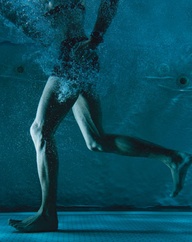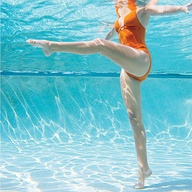 As we return to school this week, what school bag has you or your child chosen? The correct choice can encourage good spinal health and minimise strain on your child’s developing spine.
As we return to school this week, what school bag has you or your child chosen? The correct choice can encourage good spinal health and minimise strain on your child’s developing spine.
It may be easy to overlook the significance of some of the necessary choices such as school bags and footwear and how this can affect a child’s developing body and spine not only in terms of an aching back from a heavy school bag but sometimes more seriously affecting their concentration, learning and overall brain function.
How does that work? Well, a school bag that is too heavy, too big or too small and/or carried incorrectly can cause postural changes that place irritation throughout the spine and nervous system (which includes the brain and spinal cord) causing symptoms including back pain in children.

Leaning to the side to balance a shoulder bag creates unnatural curves in the spine which potentially causes childhood & adolescent back pain
Leaning forward to manage the excess weight and size places pressure on still developing spinal bones (vertebrae). Repeatedly carrying a bag on one shoulder only causes a sideways shift in the body leading to scoliosis (curvature of the spine) which as a condition can cause difficulty in breathing and can in some cases cause chronic back pain.
Forward head posture can also occur, placing strain on the nerves supplying the arms, chest and lungs and also on the brain stem, which controls a large number of bodily and cognitive functions.
Researchers have found that the weight carried in back packs is often 30 to 40% of a child’s body weight despite recommendations that schoolbags should not exceed 10-15%. In a recent study it was found that children carrying bags weighing more than 10% of their body weight have been found to have poorer lung function.
SCHOOL BAG GUIDELINES
• Make sure that the back pain has wide padded adjustable straps.
• A bag with individualised compartments helps distribute the weight of the contents more effectively.
• Urge your child to carry the bag on both shoulders.
• Make sure the backpack weighs no more than 10% of the weight of your child when full.
• The back pack should be carried on both shoulders fitted snugly against the back rather than hanging off it. This means it shouldn’t hang more than 4 inches below the waistline of your child whilst on.
• Encourage your child to adopt and upright posture rather than a rounded shoulder one and urge caution removing and putting on backpacks. Keep the trunk of your body stable and avoid excessive twisting to avoid back strain and back pain.
Warning signs for parents to look out for:
- Changes in posture when wearing the backpack, leaning forward etc,
- Struggling when putting on or taking off the backpack;
- Complaining of back, neck or shoulder pain (please don’t ignore complaints of back pain in your children. It is NOT just growing pains and should be taken seriously and assessed properly)
- Neurological signs such as tingling and numbness in the arms and hands, or headaches.
- Red marks on the shoulders
Keeping an eye on your child’s school bag and watching out for early warning signs of developing back pain or back problems can help your child to have a successful and happy year this year and every year in school.
If you have any concerns about your child’s bag, back pain or any unexplained pains that your child is complaining about, please free to consult one of our specialist Chiropractic Association of Ireland team for a thorough professional evaluation and assessment.
Our Gorey Family Chiropractic Team are covered by VHI, Aviva, Laya and other Irish Insurers as well as under the GAA scheme. For an assessment please contact 053 94 83338 or alternatively email an enquiry to info@chiropractor.ie










































